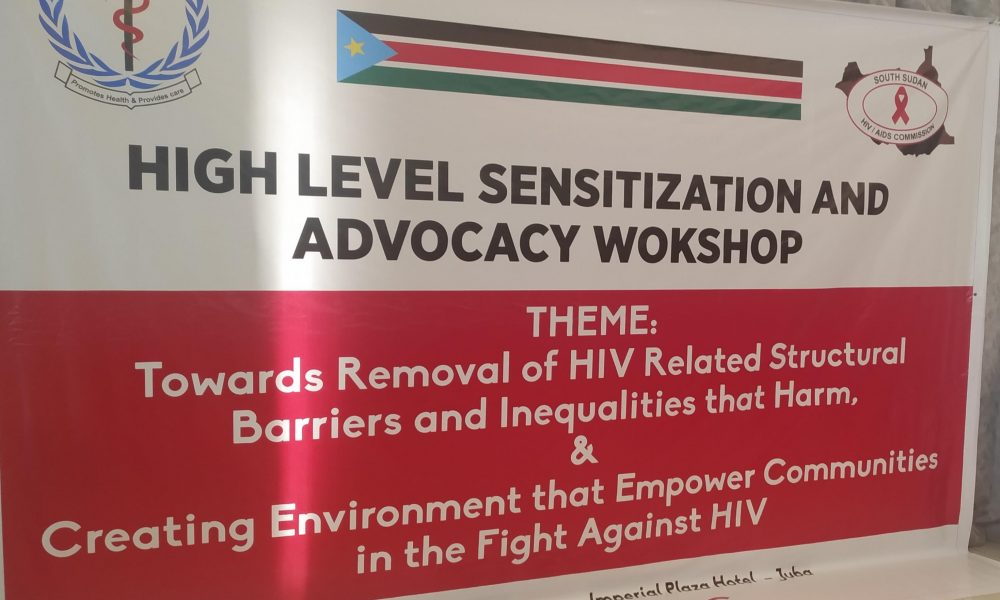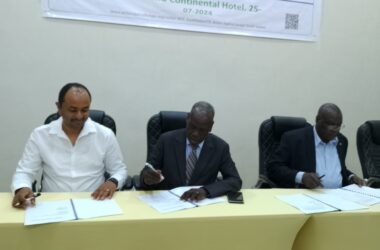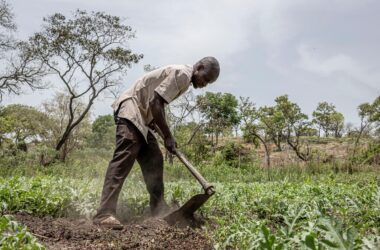By Charles K Mark
South Sudan HIV/AIDS Commission reported that risks of HIV infections among women and girls engaging in sex work.
The Commission disclosed this yesterday in its report of several Integrated Biological Behavioral Surveillance Surveys (IBBSS) on female sex workers conducted in Juba, Wau, Nimule, and Yambio.
Director of Programs for the South Sudan AIDS Commission, Atilio Gabriel, highlighted that “The HIV prevalence among female sex workers in Wau and Yambio is reported at 6.7% and 13.6%, respectively, which is much higher than in the general population (15–49 years), estimated at 1.944% in 2022.”
The AIDS Commission also revealed that the stigma index and vulnerability survey (SSNeP 2020) indicated that people living with (PLHIV) and vulnerable populations continue to face HIV-related human rights abuses.
It recorded cases of violations, stigma, and discrimination at the hands of authorities in the cities and towns of South Sudan.
The commission further revealed that a Gender-Based Violence Knowledge, Attitude, and Practice survey among 698 sex workers, 49% had been beaten or hurt in the past 12 months.
Also, 48% of the above figure had been raped, 40% had been refused protection by police or security forces when they requested it, and 30% had been arrested.
“None of these women sought legal redress, either because they did not know it was available or for fear of further violence and abuse due to reprisal,” Atilio decried.
He said efforts to address the above challenges, including support for access to justice, remained largely inadequate.
The NSP stipulates that human-rights-based and gender-transformative approaches are critical components to the success of the national HIV response, which is dependent on protecting and promoting the rights of those groups who are affected by punitive laws and regulations, socially excluded, marginalized, and vulnerable.
Therefore, prioritizing HIV interventions for key populations is important in managing the HIV epidemic.
But, it said an effective national response to HIV must be supported by laws, policies, and systems across the health sector in order to reduce existing structural barriers related to human rights and to effectively sustain gains.
The AIDS Commission stated that little has been done in terms of advocacy for addressing the structural barriers related to human rights.
As it is important to ‘Know Your Epidemic,’ it is equally important to understand the laws, policies, and contextual factors influencing human rights and access to basic health services in the country.
Therefore, there is a need to make law enforcement, local government authorities, city councils, and municipalities aware of their role in protecting the rights to health for all, the commission said.
It stressed on the importance of raising awareness about HIV/AIDS and the importance of providing health and HIV/AIDS services to everyone, including KPs, PLHIV, and other vulnerable populations in South Sudan.
Strategies that will address structural barriers and practices such as violence, frequent arrest, forced HIV testing, denial of access to HIV treatment, stigma, and discrimination that are hindering efforts to reach KPs and PLHIV must be discussed, the commission said.
Partners such as the United Nations Programme on HIV/AIDS (UNAIDS) also revealed that HIV remains a global public health challenge.
While presenting on behalf of UNAIDS’ Country Office in South Sudan, the program officer, Madam Betty Araba, said that as of 2022, about 39 million people were living with HIV globally.
“More than 50% of PLHIV in Eastern and Sub-Saharan Africa (ESA, 2022) were women and girls,” she reported.
Araba added, “HIV prevalence is 4 and 7 times higher among sex workers and people who inject drugs, respectively.”
In the same year (2022), the official said about 1.3 million people became newly infected with HIV, and 630,000 people died from AIDS-related illnesses.
The new Global AIDS Strategy (2021–2026) seeks to reduce the inequalities that drive the AIDS epidemic and end AIDS by 2030.
Meanwhile, our own Ministry of Health recommended comprehensive adherence counseling for newly initiated clients.
Director of HIV in the MoH, Dr. Agai Kerubino, added that HIV awareness in the community to mitigate stigma and treatment adherence is needed.
He also urged for training and supporting adequate health workers on HIV care and management, including refresher, mentorship, and exchange visits.
Besides the recommendations, Agai noted some challenges that hamper the fulfillment of the above recommendations:
“Among the challenges are low knowledge and awareness about HIV, very low uptake and use of condoms, and extremely high rates of sexual and gender-based violence (SGBV),” the director said.
He cited low uptake of male circumcision for religious and cultural reasons, elevated rates of transactional sex and sex work, and high levels of HIV-related stigma and discrimination.
“War and conflict, high levels of illiteracy, and low educational attainment beyond primary levels,” he stated.
The director also mentioned weak or non-functioning health systems due to chronic underinvestment in the health sector.
The Paris Declaration (December 2014 and amended in November 2019) and subsequent engagements committed cities and municipalities to achieve zero HIV-related stigma and global HIV targets.
This is a trajectory towards zero new HIV infections and zero AIDS-related deaths.
The declaration recognizes that globally, cities and municipalities bear a heavy HIV burden in addition to growing inequities.
Towns and cities are also home to large numbers of key populations at higher risk of HIV infection, which often receives limited attention in HIV programs.




